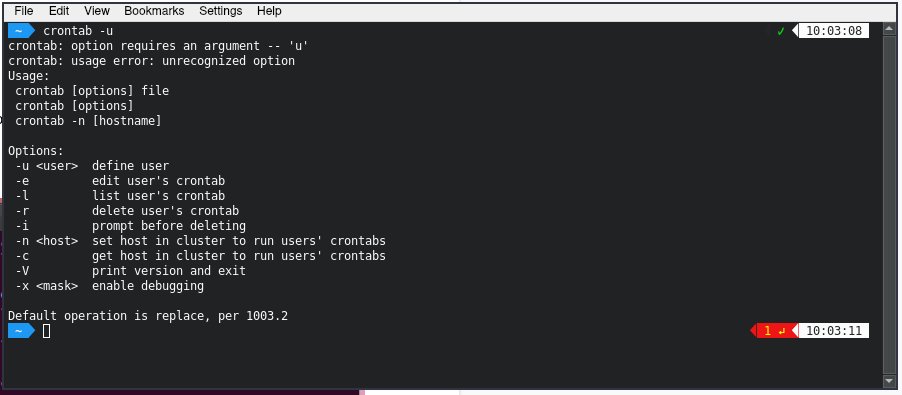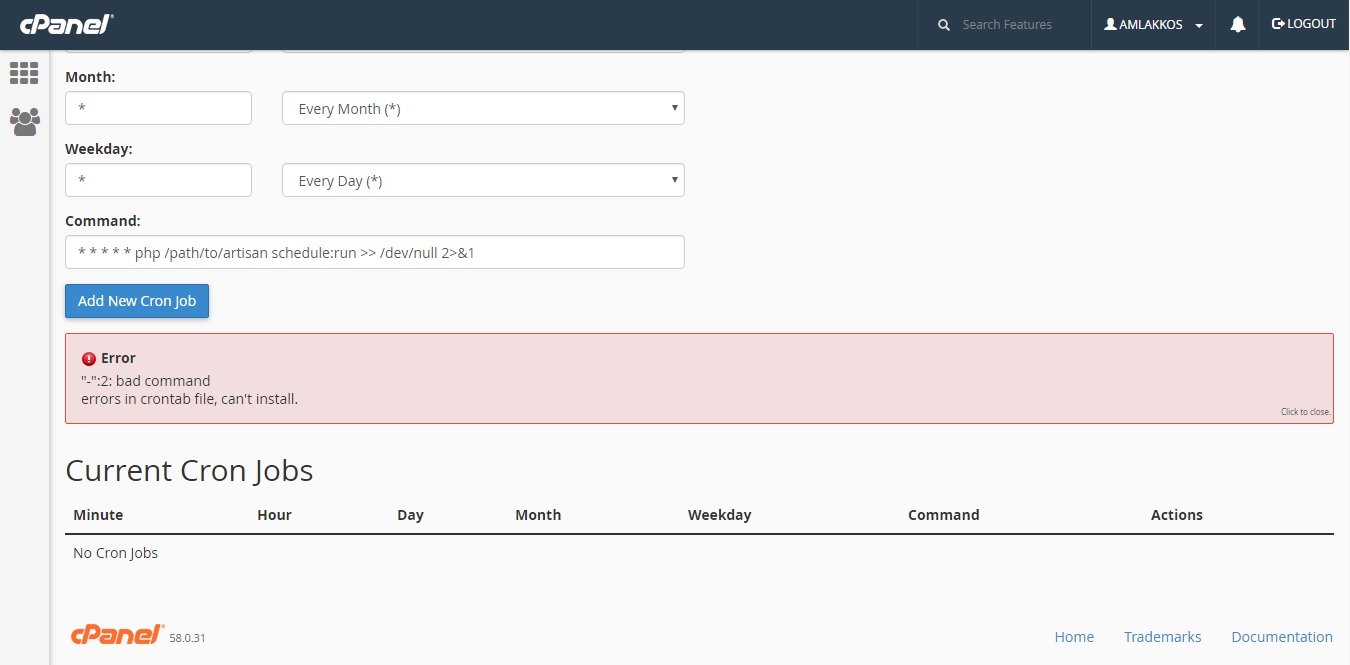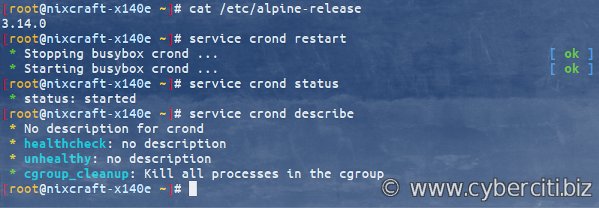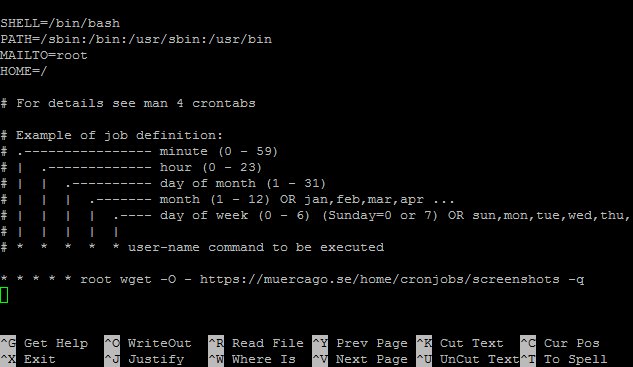Looking to create cron jobs? Wondering how to automate your tasks and save time? Look no further! In this blog article, we will guide you through the process of creating cron jobs, allowing you to schedule and execute specific commands on your server. Whether you want to schedule backups, run scripts, or perform regular updates, cron jobs are the solution you need. Join us as we explore the ins and outs of creating cron jobs and take control of your task scheduling. Let’s get started!
Create Cron Job
A cron job is an automated task scheduler in Unix-like operating systems. It allows you to schedule scripts or commands to run automatically at specified intervals. Cron jobs are useful for a wide range of tasks, such as data backups, system updates, or generating reports. In this article, we will explore how to create cron jobs and make the most out of this powerful tool.
Understanding Cron Syntax
Before diving into creating cron jobs, it’s essential to understand the syntax used to define the schedules. A cron schedule consists of five fields: minute, hour, day of month, month, and day of week. Each field accepts specific values or range of values, allowing you to define when the cron job should run.
Here’s how the cron syntax looks like:
“`
* * * * *
| | | | |
| | | | +—- Day of the Week (0 – 7) (Sunday = 0 or 7)
| | | +—— Month (1 – 12)
| | +——– Day of the Month (1 – 31)
| +———- Hour (0 – 23)
+———— Minute (0 – 59)
“`
Let’s say we want to schedule a cron job to run every day at 9:00 AM. The cron schedule would be:
“`
0 9 * * *
“`
Accessing the Cron Tab
The cron jobs are managed through the cron table, commonly known as the “cron tab.” To access and edit the cron tab, you need to open it using a text editor or use the `crontab` command-line utility.
To open the cron tab for editing, use the following command:
“`
crontab -e
“`
This will open the cron tab in the default editor specified by your system. If it’s your first time accessing the cron tab, it might prompt you to choose the default editor. Once the file is open, you can add or modify cron jobs according to your requirements.
Creating a Simple Cron Job
To create a basic cron job, you need to specify the command or script you want to run and the schedule at which it should execute. Let’s say we want to schedule a script called `backup.sh` to run every Sunday at 2:00 AM.
1. Open the cron tab for editing using `crontab -e`.
2. Add a new line at the end of the file.
3. Specify the schedule and command/script to run:
“`
0 2 * * 0 /path/to/backup.sh
“`
4. Save the file and exit the editor.
This cron job will execute the `backup.sh` script every Sunday at 2:00 AM. Make sure to provide the correct path to the script.
Common Cron Job Patterns
Cron jobs support a variety of patterns to define scheduling intervals. Here are some common patterns you can use:
Run Every Minute
To run a command or script every minute, use the following cron schedule:
“`
* * * * *
“`
Run Every Hour
To run a command or script every hour at the beginning of the hour, use the following cron schedule:
“`
0 * * * *
“`
You can replace the `0` with any other minute (0-59) to offset the start time within the hour.
Run Every Day
To run a command or script once every day at a specific time, use the following cron schedule:
“`
0 9 * * *
“`
This example runs the command/script at 9:00 AM every day. You can adjust the hour (0-23) and minute (0-59) values to match your preferred time.
Run Every Week
To run a command or script once a week on a specific day and time, use the following cron schedule:
“`
0 2 * * 0 /path/to/script.sh
“`
In this example, the command/script will run on Sundays at 2:00 AM. Modify the last field (0-7) to match the desired day of the week (Sunday = 0 or 7, Monday = 1, etc.).
Advanced Cron Job Options
Cron jobs offer advanced options that allow you to define more complex schedules or customize the environment in which the commands/scripts run. Here are some advanced options you may find useful:
Redirecting Output
By default, the output of a cron job (both standard output and standard error) is sent to the email address associated with the user account. However, you can redirect the output to a file instead. Here’s an example:
“`
0 2 * * 0 /path/to/script.sh > /path/to/output.log 2>&1
“`
This will redirect both standard output and standard error to the specified file (`output.log` in this case). Modify the paths according to your requirements.
Specifying the Environment
Cron jobs run in a minimal environment, which means they may not have access to certain variables or paths that are available in interactive shell sessions. To ensure the cron job runs with the correct environment, you can specify it explicitly in the cron tab. Here’s an example:
“`
SHELL=/bin/bash
PATH=/usr/local/sbin:/usr/local/bin:/usr/sbin:/usr/bin:/sbin:/bin
0 2 * * 0 /path/to/script.sh
“`
In this example, the `SHELL` variable is set to `/bin/bash`, and the `PATH` variable includes the standard system paths. Adjust the values based on your system configuration and requirements.
Managing Cron Jobs
Once you have created cron jobs, you might need to modify or remove them at some point. Here are a few useful commands to manage cron jobs:
– `crontab -l` – View the current cron tab entries.
– `crontab -e` – Edit the cron tab using the default editor.
– `crontab -r` – Remove all cron jobs for the current user.
– `crontab -l | grep “keyword”` – Search for specific cron jobs containing a keyword.
It’s important to validate and test your cron jobs to ensure they are working as expected. You can manually run a cron job without waiting for the scheduled time to verify its functionality.
Creating cron jobs is a powerful way to automate repetitive tasks on Unix-like operating systems. By understanding the cron syntax and utilizing advanced options, you can schedule scripts or commands to run automatically at specified intervals. Whether it’s backing up data, generating reports, or running system updates, cron jobs play a vital role in streamlining administrative tasks. By following the steps and best practices outlined in this article, you’ll be able to create cron jobs confidently and effectively manage automated tasks on your system.
Linux Crash Course – Scheduling Tasks with Cron
Frequently Asked Questions
How can I create a cron job?
To create a cron job, you need to follow these steps:
- Access your server or hosting control panel.
- Locate the cron job section or option.
- Click on “Add New” or a similar button to create a new cron job.
- Specify the timing for the cron job by setting the minute, hour, day, month, and day of the week.
- Enter the command or script that you want the cron job to execute.
- Save or submit the cron job configuration.
Can I schedule a cron job to run at specific intervals?
Yes, you can schedule a cron job to run at specific intervals. When setting up the cron job, you can define the timing using numeric values for minutes, hours, days, months, and days of the week. For example, if you want a job to run every 15 minutes, you would set the minute field to “*/15”.
What can I use cron jobs for?
Cron jobs are useful for automating repetitive tasks or executing commands at specific times. You can use cron jobs to perform various tasks such as updating data, sending automated emails, running backups, fetching RSS feeds, and much more. They offer a convenient way to schedule and automate routine tasks on a server.
Can I edit or delete a cron job after creating it?
Yes, you can edit or delete a cron job after creating it. Most control panels or server setups provide options to manage existing cron jobs. Simply locate the cron job you want to modify or remove and make the necessary changes or delete it accordingly.
What if my cron job fails to execute?
If a cron job fails to execute, there are a few things you can check:
- Ensure that the command or script specified in the cron job is valid and accessible.
- Verify that the timing settings are correct and not conflicting with other cron jobs.
- Check the logs or error messages related to the cron job for any specific error details.
- Make sure the server or hosting environment is running properly without any issues.
If none of these steps help resolve the issue, it might be worth reaching out to your hosting provider or server administrator for further assistance.
Final Thoughts
In conclusion, creating a cron job is a simple yet powerful way to automate repetitive tasks on your system. By using the crontab command and specifying the desired schedule and command, you can ensure that specific tasks are executed at the specified times. Whether it is running backups, sending regular reports, or updating your website, cron jobs provide an efficient solution. With just a few steps, you can set up and manage cron jobs effectively, saving you time and effort in the long run. So, if you need to automate recurring tasks, look no further than creating a cron job.




